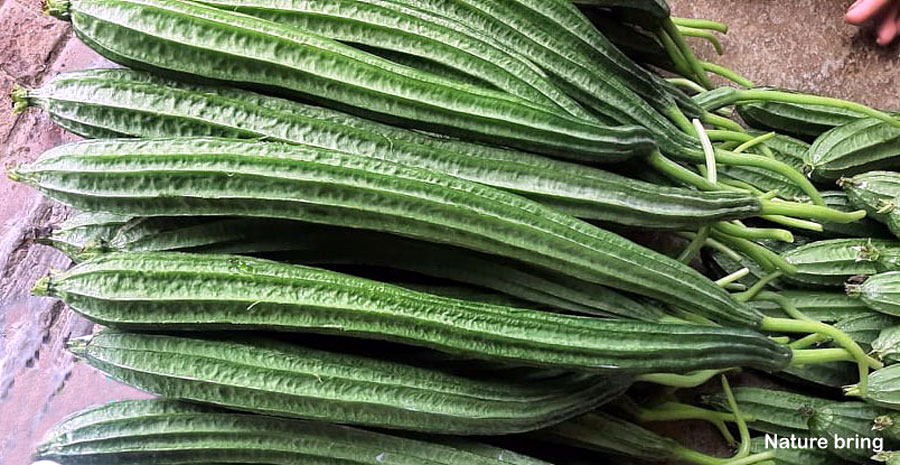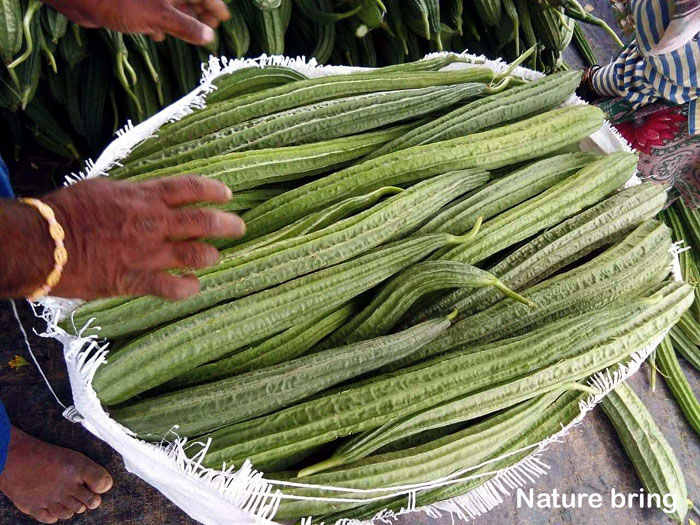Ridge Gourd ( Turai)
Early spring and summer are two of the seasons that are plentiful in green vegetables till late spring. Ridge Gourd – Turai Among these few, however, are the only vegetables and the reasons for which one would want to grow during summers. Being a climber this vegetable is conveniently grown on patios or even containers. As Ridge Gourd belongs to the family of cucumbers, it is highly rich in water content, so it contains a lot of vitamins and nutrients. Its low caloric density helps maintain body weight. It is particularly very rich in Vitamin A. In this post,
Nature Bring will tell you how you can easily grow this useful vegetable at your home. Soil Ridge Gourd tolerates a wide range of soil types; however, loamy and silty soils are the most preferred for the plant.
Common name in India
Ridge Gord is popularly known as Luffa acutangula and Sponge Gourd. It is Turai, Turiya, Sirola, dodka, Beerakaya, Pechanga, and also known as Chinese Okra.
Classification
Scientific name Luffaacutangula
Common name Angled luffa, Ridged Luffa, Turai
Plant type Vegetable
Sun required Full Sun
Soil Natural to slightly acidic
Soil PH 5.8-6.8
Planting season Summer, Spring
Zone 3-8
- You can grow Turai with the appropriate water system throughout the year. By the way, the most suitable time for Planting Rain-fed Crops is before the Monsoon.
Growing condition Ridge gourd
Raising Ridge Gourd by seed
Spread 2-inch organic compost over the soil, working into 6 to 8 inches depth. It does best on soil pH ranging between 6.5 and 7.0, or neutral to slightly alkaline. Seed Treatment Soil rich in organic matter and direct sunlight are favorable conditions for this plant to germinate successfully.
Seed treatment
One can treat its seeds by rubbing them with sandpaper or by soaking them in cold water for about 24 hours before planting. This will encourage more rapid germination.
Transplanting
After the preparation of the seeds, they are then directly sown into the pits with about three seeds per pit. Alternatively, one can put potting soil in a polythene bag and transplant the seedlings later. Once good growth is established by the plants, thinning should then be done for further appropriate development.
Ridge Gourd Care
Watering
Water this plant carefully; though it must have consistent moisture, without appropriate drainage, excess water causes damages. No specific amount of water has been recommended for regular use.
Fertilizer
Organic compost used for your plant will help create an in-depth flavor within the vegetables. Compost of cow manure is one of the best choices. Other than that, you can also add kitchen waste through your compost bin. Moreover, a biogas plant also provides you with good-quality compost.
Moisture
The soil requirement for ridge gourd is moist. This is a fast-growing plant, and it needs sufficient moisture. However, over-watering is an issue. So, proper watering has to be done once the topsoil is dried.
Provide trellis for support
With the maturity of Ridge gourds, the tendrils will start coming out. The tendrils are how the plants will support themselves or climb over other objects that may be nearby. You can use a trellis to help you train these plants. For better growth and spreading, you can use the high branches of any tree or GI wire at about 7 to 8 feet tall.
Harvesting
Fruits of Turai do not allow over-ripening; its fruits are best picked young. If allowed for a long time, then the skin thickens, and fruits become fibrous and hard to separate. Ripe fruits are left on the plant and then, after scorching, their seed could be collected for storage.
Problem with Ridge gourd
Generally, gourds are affected by insects, Beetles, fruit flies, and caterpillars are the main insects. It would be better if you prevent it instead of a cure, Powdery mildew, and downy mildew are common diseases. It is better to use chemical pesticides than you use homemade pesticides. Make a paste with an equal quantity of onion, ginger, garlic, and chili, and then dilute with water and spray it. Tie the cloth to your eyes while spraying.
Read also:
How to grow Onion in containers. Houseplants care tips. Growing Pansy flowers. 8 Best Frugal Gardening Tips. Kohlrabi’s growing and caring tips. Pointed gourd cultivation. Organic gardening. Crossandra flowers growing and caring tips. Broccoli growing and caring tips. Lupin growing and care information. Garden phlox growing and care guide. Cantaloupe growing and caring. Raspberry growing guide.
For Pin:







